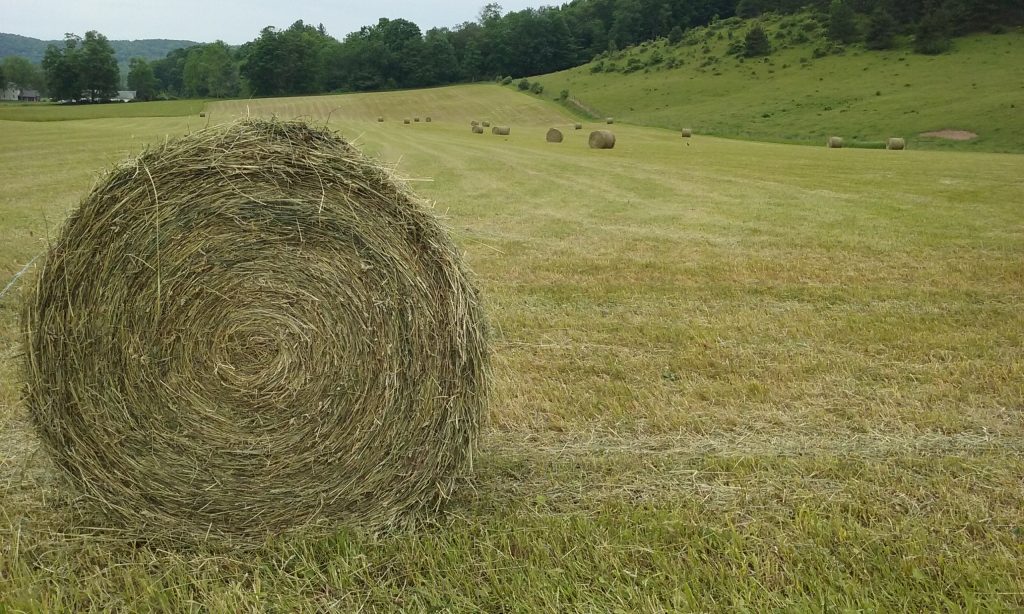Farmland Preservation Program
Agriculture has always been vital to the culture and economy of Luzerne County, and it supports a broad infrastructure of related agri-businesses. The inherent value of farmland goes beyond its economic value by providing habitat for wildlife, groundwater recharge areas, and open space in an increasingly urbanized area. Through this program, productive farmland is preserved so it is available to grow crops rather than houses or other types of development.

This is accomplished through the county’s purchase of the development rights to farmland and the placement of a perpetual conservation easement on the property. The landowner retains ownership of the land, but in exchange for the payment, they (and subsequent landowners) must abide by the restrictions outlined in the easement. The whole purpose of the easement is to protect the agricultural and open space benefits of the property.
Program Implementation
The Luzerne Conservation District provides administrative support to the Luzerne County Farmland Preservation Board to implement the program locally.
Board Members:
- Linda Thoma, Chair
- Jon Lucas, Secretary, Farmer Member
- Bryan McManus, Developer Member
- Rich Yost, Municipal Member
- Nancy Snee, At-Large Member
- Blakslee Masters, Farmer Member
Farmland Preservation Board Meeting Information (agenda, minutes, etc.)
Luzerne County Farmland Preservation Program Guide & By-laws
Program Administrator:
Jen Merryman, Agricultural Conservation Specialist
(Questions about the program can be directed to Jen at 570-674-7991 extension 7.)
The Conservation Easement Process
Property Eligibility Requirements:
- Must be an active farm
- Must consist of at least 50 acres, of which 50% is used for cropland, pasture, or grazing
- 50% of soils must be Soils Capability Classes I to IV
- Must be part of an Agricultural Security Area (ASA) of at least 500 acres or more
- Must have a Conservation Plan which is between 1 to 10 years old
Application Procedure:
The application deadline for each year is February 1st. For more information about the program, or to find out how to apply, contact Jen Merryman at 570-674-7991 extension 7.
Agricultural Conservation Easement Application Form
Evaluation of the Farm:
Once applications are received for any given year, the applications are evaluated based on three major factors: Soil Quality, Development Potential Factors, and Clustering Potential Factors. The end result of the evaluation is a numerical score. Depending on the score a farm receives, it is inserted onto a ranked waiting list. As higher-ranked farms are preserved, other farms on the waiting list move up. However, if new applicants score higher than existing applicants on the waiting list, they get a higher rank. In other words, the list is “refreshed” each year. The program receives annual funding from the state through the Pennsylvania Department of Agriculture’s Bureau of Farmland Preservation to preserve farms, and there is usually enough funding to work with 1-2 applicants per year.
The Easement Purchase:
Once an application rises to the top of the list, the first step is to do an appraisal. The appraisal evaluates the farm based on Fair Market Value and Farm Value. The difference between the two values is the Easement Value. The Board has customarily offered applicants the full Easement Value. If the applicant does not want to accept the Board’s offer, they have the option of getting a second appraisal done at their own cost. Once that appraisal is done, a formula, taking into consideration both appraisals, is used to determine the Formula Easement Value.
The landowner and the county Farmland Preservation Board agree upon an easement purchase price, and the conservation easement – a legal land transaction document – is drawn up and executed for the property. The entire process is done under the oversight and requirements of the state Bureau of Farmland Preservation and each easement requires the approval of the State Agricultural Land Preservation Board.